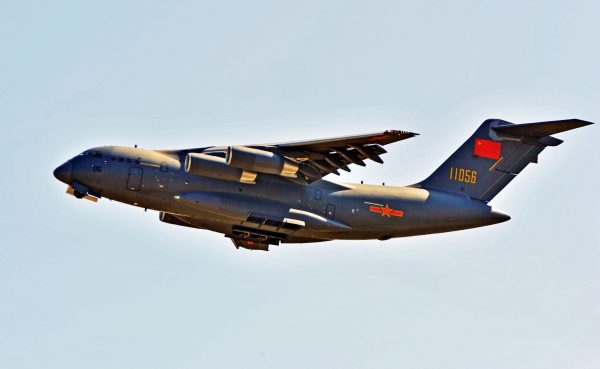No air force — no matter how modern its fighters or how good its pilots — can prevail without good logistics. The People’s Liberation Army Air Force’s (PLAAF) generals understand this well. Over the past decade China has invested significant resources in improving and expanding its mid-air refuelling and strategic airlift capabilities.
For most of its existence since it was founded in 1949, the PLAAF’s role was limited to defending mainland China’s airspace and nearby areas. Chinese MiG-15s and MiG-17s fought against US fighters in Korea and the Taiwan Strait in the early 1950s, but the PLAAF’s role was limited both in terms of combat missions and logistical support. The Chinese military has been an army-centred force for most of its history.
This began to shift along with China’s economic and strategic interests. Beijing’s expanding global interests and territorial claims are now leading to profound changes in the PLAAF’s doctrine and force structure, seeing it move away from its traditional role of operating close to the nation’s mainland airspace. Under its sweeping nine-dash line, China claims a large number of islands and reefs in the South China Sea. It has built several artificial islands in these disputed waters and constructed runways on some of them.
To maintain and regularly resupply these small and isolated outposts, the PLAAF needed to increase its strategic airlift capabilities. Until recently, China had relied on the Soviet-era design Il-76 as its main transport aircraft — a mid-size airplane with an operational range of 4000 kilometres. But from 2016 the PLAAF began to use the indigenously built Xi’an Y-20, its first real strategic airlift platform.
With an operational range of 7800 kilometres and a 66 ton cargo capacity, the Y-20 is a considerable addition to the PLAAF’s strategic airlift capabilities. While there are no reliable sources confirming the exact number of operational Y-20s, it is believed to be over 20 at present. If more than 20 aircraft have entered service in five years, it is reasonable to assume that the number will continue to increase.
In December 2020, satellite imagery showed a Y-20 parked on a runway at Fiery Cross Reef in the South China Sea — and there are reports of sightings on other artificial islands. The Y-20 has also allegedly been involved in violations of Indian air space and Malaysia and Indonesia’s Exclusive Economic Zones. Such incursions are aimed at testing the air defence capabilities of China’s regional rivals and acclimatising Y-20 crews to long-range operations.
An air refuelling variant of the Y-20 — referred to by some sources as the Y-20U — has also entered service with the PLAAF, with at least four now likely to be operational. According to Chinese state media, the Y-20U is capable of refuelling a wide range of aircraft including the J-20 stealth fighter, bombers and Airborne Warning and Control System (AWACS) aircraft. The PLAAF’s growing fleet of Y-20 transports and air refuelling variants greatly increases its ability to sustain operations well beyond its traditional area of operations.
By extending the range and duration of the missions of fighter jets, bombers, AWACS aircraft and transports, the Y-20U significantly increases the ability of the PLAAF to challenge US and regional states’ operations in the region. While China is still unable to establish air dominance in the South China Sea, its ability is growing by the day. China’s strategic airlift capabilities are now second only to the United States.
In addition to improving China’s ability to conduct and sustain air operations in contested regional waters, its growing investment in strategic airlift and mid-air refuelling are also aimed at contingencies further afield. China currently operates one naval base in Djibouti, at the entrance to the Red Sea. Supplying this base and any future Chinese military bases overseas requires a fleet of long-range transports.
But the most immediate motivation behind the expansion of China’s strategic airlift capabilities is to improve the ability of the PLAAF and naval aviation forces to sustain operations in the contested seas closer to China. China is deploying advanced air defence systems on its artificial islands and increasing the operational range of its growing number of modern fighter jets. Rapid improvements in its satellite network and AWACS aircraft are also increasing the Chinese military’s ability to monitor and target US and allied forces.
The combination of these improvements means that the United States and its allies cannot take air dominance for granted in any conflict with China.
Loro Horta is a public servant based in Dili and is a former Timor-Leste ambassador to Cuba.
All views expressed in this article are strictly the author’s own.

